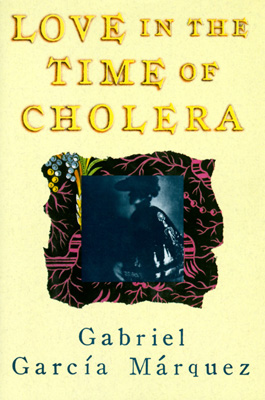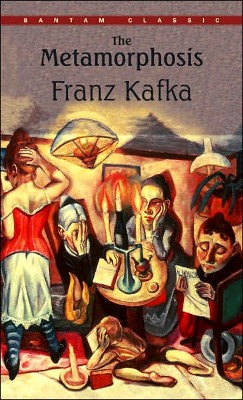Thursday, April 3, 2008
Briefly, Line Recognition
While calibrating military optics, Joseph Fraunhofer noted that the spectral lines, which specify elements to the amount of light their atoms emit or absorb; and the resulting wavelength, of the Sun differed from other stars.
Aldrich-Mees' lines appear horizontally along the nail bed after arsenic, thallium or other heavy metal poisoning or they may indicate renal failure.
Median incision begins along the linea alba, or white line, or the fusion of the aponeuroses of the abdomen, which separates the left and right rectus abominis muscles.
Where each phrase, clause or sentence corresponds to a line of poetry with a line break or caesura, enjambement delays the intention of the lines by "straddling" or "bestriding" them.
Conceivably, the Nazca lines of the Pampas de Jumana of Peru were made by removing the iron oxide rocks to expose the light earth underneath, and their longevity is owing to the relatively windless conditions of the desert there.
Ascenders and descenders categorize the Latin letters in the study of lineation, or typography.
Recognizing the line of sex role conflicts is tantamount to crossing it.
Djuna Barnes defines Nora of Nightwood as if the horizon line of day and night applies to soul metered by it:
"'Have I not shut my eyes with the added shutter of the night and put my hand out? And it's the same with girls,' he said, 'those who turn the day into night, the young, the drug addict, the profligate, the drunken and that most miserable, the lover who watches all night long in fear and anguish. These can never again live the life of the day. When one meets them at high noon they give off, as it were a protective emanation, something dark and muted. The light does not become them any longer. They begin to have an unrecorded look. It is as if they were being tried by the continual blows of an unseen adversary. They acquire an 'unwilling' set of features. They become old without reward, the widower bird sitting sighing at the turnstile of heaven, 'Hallelujah! I am sticked! Skoll! Skoll! I am dying!'"
...
The concept of lines enters my language lately since I clearly enjoy crossing them. What if the barriers that initially titillate us in their impenetrability or by the insistence of transversal keep things interesting, for the lack of another word?
Aldrich-Mees' lines appear horizontally along the nail bed after arsenic, thallium or other heavy metal poisoning or they may indicate renal failure.
Median incision begins along the linea alba, or white line, or the fusion of the aponeuroses of the abdomen, which separates the left and right rectus abominis muscles.
Where each phrase, clause or sentence corresponds to a line of poetry with a line break or caesura, enjambement delays the intention of the lines by "straddling" or "bestriding" them.
Conceivably, the Nazca lines of the Pampas de Jumana of Peru were made by removing the iron oxide rocks to expose the light earth underneath, and their longevity is owing to the relatively windless conditions of the desert there.
Ascenders and descenders categorize the Latin letters in the study of lineation, or typography.
Recognizing the line of sex role conflicts is tantamount to crossing it.
Djuna Barnes defines Nora of Nightwood as if the horizon line of day and night applies to soul metered by it:
"'Have I not shut my eyes with the added shutter of the night and put my hand out? And it's the same with girls,' he said, 'those who turn the day into night, the young, the drug addict, the profligate, the drunken and that most miserable, the lover who watches all night long in fear and anguish. These can never again live the life of the day. When one meets them at high noon they give off, as it were a protective emanation, something dark and muted. The light does not become them any longer. They begin to have an unrecorded look. It is as if they were being tried by the continual blows of an unseen adversary. They acquire an 'unwilling' set of features. They become old without reward, the widower bird sitting sighing at the turnstile of heaven, 'Hallelujah! I am sticked! Skoll! Skoll! I am dying!'"
...
The concept of lines enters my language lately since I clearly enjoy crossing them. What if the barriers that initially titillate us in their impenetrability or by the insistence of transversal keep things interesting, for the lack of another word?
Subscribe to:
Post Comments (Atom)





15 comments:
Answer: I would probably feel less against it if I moderated myself a bit more. I was reading about sugar, sex, gambling, competing binges, which all overstimulate the hypothalamus and release dopamine. The only means to experience less "withdrawal" is to occupy oneself with concentration and consistency. It really takes twice as much effort to thwart our primative reward circuitry, to reach equilibrium.
Ha. The person concluding this about herself wanted to read Fred Previc's The Dopaminergic Mind in Human Evolution and History, so perhaps I will read it this July.
I just realized that it is from Job 17:12 in Nightwood, "those who turn the day into night". As a whole, the book has little to say to me beyond select annotations and William Blake's images of angleworms, boils, and Leviathans.
Job 3:9 Let the stars of the twilight thereof be dark; let it look for light, but have none; neither let ... own shame; wandering stars, to whom is reserved the blackness of darkness for ever.
https://www.youtube.com/watch?v=JXkondOj7pg
*Not little to say, just passively digested for the most part in Western culture
http://www.pathologystudent.com/?p=9739
For the near distant future.
"So black, she said, now smiling. But I'm sure you get told that a lot" (51). Richard Flanagan's The Narrow Road to the Deep North
Overleaping, that they are stars; I meant that as a film couple, for Dark Passage (1947), they really were married.
https://dominiquedupuis.wordpress.com/2008/10/24/hommage-a-frenhofer/
http://schabrieres.wordpress.com/2014/12/20/georges-perros-poeme-1967-3/
http://www.tate.org.uk/art/archive
http://www.nybooks.com/blogs/nyrblog/2014/dec/23/mice-naughty-and-nice/?insrc=wbll
For another exploration, another time.
http://www.timeshighereducation.co.uk/417714.article
Thank you, for reminding me of Beatrix Potter. I did not know that my favorite book (seconded by The Tale of Jeremy Fisher, and The Tale of Benjamin Bunny, now that I have read both obsessively, with my niece) used a real dollhouse to stage the drama. I notice that there is something surreal, almost frightening, about the scale of the kitchen's wallpaper, as if the thoughts contained therein are too intense to be constrained by the room.
https://books.google.com/books?id=vOjvCKbu8D8C&lpg=PT224&ots=oGKY39Vpo5&dq=Hill%20Top%20dollhouse%20Beatrix%20Potter&pg=PT224#v=onepage&q=Hill%20Top%20dollhouse%20Beatrix%20Potter&f=false
http://www.nationaltrustimages.org.uk/image.aspx?id=138671&loggedIn=False
https://www.youtube.com/watch?v=uo29geocbz8
https://www.william-morris.co.uk/shop/wallpaper/morris-archive-wallpapers-ii/daisy/?code=DARW212559
https://books.google.com/books?id=Pe1SAQAAQBAJ&lpg=PT24&dq=%22Jane%20Austen%2C%20a%20writer%20much%20admired%20by%20Potter%2C%20provides%20some%20clues%20to%20Potter's%20own%20techniques.%22&pg=PT24#v=onepage&q=%22Jane%20Austen,%20a%20writer%20much%20admired%20by%20Potter,%20provides%20some%20clues%20to%20Potter's%20own%20techniques.%22&f=false
https://www.newyorker.com/magazine/1948/05/15/symbols-and-signs
"All this, and much more, she had accepted, for, after all, living does mean accepting the loss of one joy after another, not even joys in her case, mere possibilities of improvement. She thought of the recurrent waves of pain that for some reason or other she and her husband had had to endure; of the in visible giants hurting her boy in some unimaginable fashion; of the incalculable amount of tenderness contained in the world; of the fate of this tenderness, which is either crushed or wasted, or transformed into madness; of neglected children humming to themselves in unswept corners; of beautiful weeds that cannot hide from the farmer."
https://www.newyorker.com/magazine/1948/05/15/symbols-and-signs?_sp=b49dc0ac-6d58-4417-923c-edb6a1cc6f1d.1759750100119
At the book sale in the South County library I bought another copy of this:
https://books.google.com/books?id=FR7NJhwa57kC&printsec=frontcover&dq=edith+and+mr+bear+dare+wright&hl=en&newbks=1&newbks_redir=0&source=gb_mobile_search&sa=X&ved=2ahUKEwi_tsa52o-QAxW0F1kFHTxhIVYQ6AF6BAgLEAM#v=onepage&q=edith%20and%20mr%20bear%20dare%20wright&f=false
https://books.google.com/books?id=JvH9d_83RmsC&printsec=frontcover&dq=The+Big+Snow+Hader&hl=en&newbks=1&newbks_redir=0&source=gb_mobile_search&sa=X&ved=2ahUKEwifjL7l2o-QAxU7D1kFHT4bPdcQ6AF6BAgOEAM#v=onepage&q=The%20Big%20Snow%20Hader&f=false
https://www.penguinrandomhouse.com/books/92458/peach-and-blue-by-sarah-s-kilborne-illustrated-by-steve-johnson-and-lou-fancher/
Post a Comment